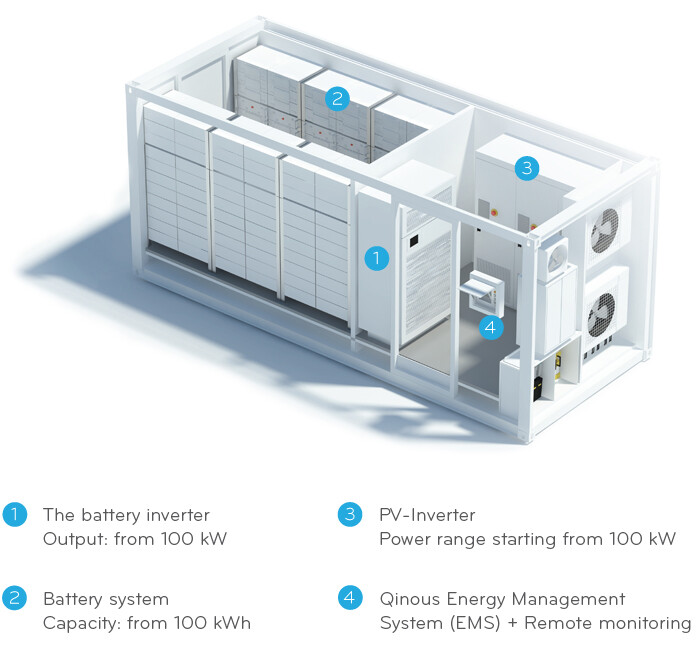German startup Qinous has devised with a ‘plug-and-play’ energy storage solution that aims to bring access to cleaner, more reliable electricity to the world, beginning with a focus on remote regions. The company believes that its products will be taken up first by islands, isolated villages & communities, mining companies and hotel resorts, but it also sees opportunities for their use in what it calls ‘grid-connected innovation applications’.
Off-grid or edge-of-grid areas, where infrastructure is ‘thin’, relatively fragile and susceptible to failures & blackouts, seem to be where some of the most interesting things are happening with distributed renewable energy & energy storage. These regions also tend to rely on diesel generators, which, while small, can be noisy, expensive to run and pollute the air. More generally, energy storage systems are widely seen as a potential facilitator of greater uptake of renewable energy sources like wind and solar, whose electricity must currently be used on the spot in the absence of a means to store it.
Qinous’s solution, the Qinous Energy Storage System (ESS) with a capacity starting at 100kW/100kWh, is modular and designed for easy integration into existing electricity networks and grids. Like all good energy storage systems, it also manages power quality & flow, and ‘knows’ how to respond as circumstances change–for instance, in the case of a blackout. The fully enclosed, shipping container-shaped exterior protects sensitive interior components from dust and the elements, and also makes the device easy to transport. Qinous offers their systems concomitant with service, offering comprehensive installation and support for their units from the time that they are installed onwards.
The Qinous ESS. Image via Qinous.
Energy storage devices like the Qinous ESS will almost certainly benefit from a growing market in the remote regions of Australia, where high electricity prices are an issue and where grid reliability can be a problem. Certain grid network operators in Australia–notably WA’s Horizon Power and the Northern Territory’s Power & Water–facing issues with high penetrations of solar PV, have already taken measures to control the amount of solar being fed into the grid. In some cases, new systems are not allowed to be connected without export control limiters. Energy storage systems, if widespread, could potentially act as a buffer in such networks, allowing for more solar uptake. Alternatively, individuals or neighbourhoods may have their own energy system installed with solar.
Also exciting is the possibility of energy storage systems being used in grid-connect applications, which could benefit the grid and complement uptake of intermittent renewables like solar and wind. CSIRO recently examined this topic in detail at its Future Grid Forum.
Top image via Qinous
© 2014 Solar Choice Pty Ltd
